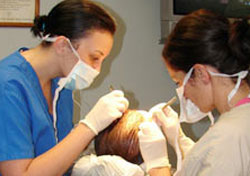If you are experiencing excessive hair loss to the point that you already have bald spots or bald areas in your head, then perhaps you have already thought about getting a hair transplant. Men, and even women, suffer from balding and hair thinning usually when they reach the age of 80, but some people who are predisposed to the condition due to their genes or a disease would suffer from it even at a very young age. Bald spots are embarrassing to have and can certainly hurt people’s self esteem. You can put on a wig or change your hairstyle but these things aren’t always helpful. If you need a more permanent and effective solution then you’d have to look into the possibility of getting a hair transplant.

Hair Transplant Procedures Then and Now
Many people are familiar with this procedure but only a few of them are actually aware of its origin. This procedure was developed as early as the 1930s when Japanese doctors were able to graft and harvest hair follicles from one area of the body and place it on another area but it was not until the 1950s when this procedure was first done in the United States. In 1959, a doctor from New York named Norman Orentreich re-introduced the procedure however it started to gain popularity only in the 60s and 70s. Some of the old techniques used for hair transplants include large grafting and mini micrografting, but eventually, better methods were developed such as the FUT (follicular unit transplantation), which is the most widely used technique today.
The Good and Bad of Hair Transplants
One major advantage of a hair transplant is that it enables the distribution of natural healthy hair to scalp areas that are showing signs of thinning or balding. With this, you can have permanent “real” hair and will no longer have any use for wigs just to cover areas affected by excessive hair loss. However, one thing you must remember is that such procedure can be quite expensive, with the average cost being $3 to $6 per graft, and depending on the extent of thinning or balding on your head, you could be spending around $7,000 per session. A complete hair transplant could take two to three sessions before you can get the best results, particularly for people with severe balding problems.
Hair Transplant Timelines
For those interested in getting a hair transplant, it helps to know exactly what to expect once the procedure is done. Recovery period is usually two weeks, though in about 24 hours you would already notice crusting in the grafted area. Scabbing will go away within 7 to 10 days and after which you will need to carefully clean the transplanted area based on your doctor’s orders. You might also notice slight numbness in the affected area but this is quite normal and will often go away in a few days. It takes about 6 to 15 weeks after surgery for your transplanted hair to grow normally, at a rate of approximately 1 cm every month.
